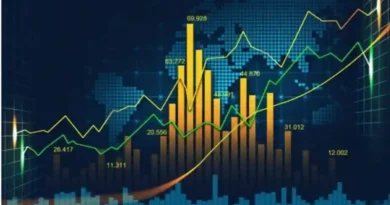Leveraging Deep Learning for Advanced Forex Robot Predictions
In the realm of forex trading, staying ahead of market trends and making accurate predictions is paramount for success. With the advent of deep learning technology, traders now have access to powerful tools that can analyze vast amounts of market data and extract valuable insights. In this article, we’ll explore how deep learning techniques are revolutionizing forex trading and enabling the development of advanced forex robots capable of making precise predictions in volatile market conditions.
Understanding Deep Learning in Forex Trading
Deep learning is a subset of machine learning that involves training artificial neural networks with multiple layers to learn representations of data. Unlike traditional machine learning algorithms, which require manual feature engineering, deep learning algorithms can automatically extract relevant features from raw data, making them well-suited for analyzing complex and high-dimensional datasets such as financial time series data.
In the context of forex trading, deep learning techniques are used to analyze historical market data, identify patterns and trends, and make predictions about future price movements. By learning from large amounts of historical data, deep learning models can capture subtle relationships and nonlinearities in the data, enabling them to make more accurate predictions than traditional statistical models.
The Role of Deep Learning in Forex Robot Predictions
Forex robots, also known as expert advisors or algorithmic trading systems, leverage deep learning techniques to make predictions about future price movements and execute trades automatically. These advanced trading systems use deep learning models to analyze market data in real-time, identify trading opportunities, and optimize trading strategies to maximize profits and minimize risk.
Deep learning plays a crucial role in forex robot predictions by enabling the following capabilities:
- Pattern Recognition: Deep learning models excel at recognizing complex patterns and trends in financial time series data. By analyzing historical price data, volume, and other market indicators, deep learning models can identify recurring patterns and trends that may indicate future price movements.
- Feature Extraction: Deep learning algorithms automatically extract relevant features from raw market data, such as moving averages, oscillators, and other technical indicators. These extracted features are then used as inputs to the model, allowing it to learn the relationships between different market variables and make predictions based on this information.
- Predictive Modeling: Deep learning models can be trained to predict future price movements based on historical data. By learning from past market behavior, these models can forecast price changes, trend reversals, and other important market events, enabling forex robots to make informed trading decisions in real-time.
- Adaptability: Deep learning models are highly adaptable and can quickly adjust to changing market conditions. By continuously learning from new data, these models can adapt their predictions and trading strategies to evolving market dynamics, ensuring optimal performance in volatile and unpredictable market environments.
Implementing Deep Learning for Forex Robot Predictions
The implementation of deep learning for forex robot predictions involves several steps:
- Data Collection: Traders begin by collecting historical market data, including price, volume, and other relevant indicators, from forex brokers or data providers. This data is used to train and validate the deep learning model.
- Model Training: Traders preprocess the collected data and split it into training and validation sets. The training set is used to train the deep learning model, while the validation set is used to evaluate the model’s performance and fine-tune its parameters.
- Model Architecture: Traders select an appropriate deep learning architecture, such as convolutional neural networks (CNNs), recurrent neural networks (RNNs), or long short-term memory networks (LSTMs), based on the characteristics of the data and the prediction task.
- Training and Validation: Traders train the deep learning model using the training data and validate its performance using the validation data. During training, the model learns to make predictions based on historical market data and adjusts its parameters to minimize prediction errors.
- Model Evaluation: Traders evaluate the performance of the trained deep learning model using various metrics, such as accuracy, precision, recall, and F1-score. They also conduct backtesting to assess the model’s performance in real-world trading scenarios.
- Deployment: Once the deep learning model has been trained and validated, traders deploy it as part of a forex robot for real-time prediction and trading. The forex robot continuously analyzes market data, makes predictions using the deep learning model, and executes trades based on the predicted outcomes.
Benefits of Deep Learning for Forex Robot Predictions
Deep learning offers several compelling benefits for forex robot predictions:
- Accuracy: Deep learning models can make accurate predictions about future price movements, enabling forex robots to execute trades with high precision and confidence.
- Speed: Deep learning algorithms can analyze vast amounts of market data and make predictions in real-time, allowing forex robots to react quickly to changing market conditions and exploit trading opportunities as they arise.
- Adaptability: Deep learning models are highly adaptable and can adjust their predictions and trading strategies to changing market dynamics, ensuring optimal performance in volatile and unpredictable market environments.
- Automation: Deep learning enables the automation of trading processes, allowing forex robots to execute trades automatically without human intervention. This frees up traders’ time and resources, allowing them to focus on higher-level strategic decisions.
Challenges and Considerations
Despite its benefits, deep learning for forex robot predictions also presents several challenges and considerations:
- Data Quality: The effectiveness of deep learning models depends on the quality and reliability of the training data. Traders must ensure that the data used to train the model is accurate, free from errors, and representative of the target market.
- Overfitting: Deep learning models are prone to overfitting, where they memorize the training data instead of learning meaningful patterns. Traders must use techniques such as regularization, dropout, and cross-validation to prevent overfitting and ensure the model generalizes well to unseen data.
- Computational Resources: Deep learning models require significant computational resources, including high-performance hardware such as GPUs and TPUs, as well as large amounts of memory and storage. Traders must invest in the necessary infrastructure to train and deploy deep learning models effectively.
- Model Interpretability: Deep learning models are often black-boxes, making it challenging to interpret their predictions and understand the underlying factors driving their decisions. Traders must develop techniques for interpreting and explaining the predictions of deep learning models to gain insights into their trading strategies.
Conclusion
Deep learning technology is revolutionizing forex trading by enabling the development of advanced forex robots capable of making precise predictions in volatile market conditions. By leveraging deep learning techniques such as pattern recognition, feature extraction, and predictive modeling, forex robots can analyze vast amounts of market data, identify trading opportunities, and execute trades with high precision and confidence.
While deep learning offers significant benefits for forex robot predictions, traders must also be mindful of the challenges and considerations associated with this technology. By addressing issues such as data quality, overfitting, computational resources, and model interpretability, traders can harness the full potential of deep learning to enhance their trading strategies and achieve greater success in the dynamic and ever-evolving world of forex trading.




